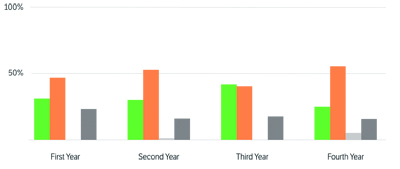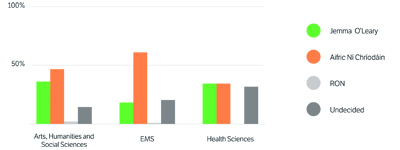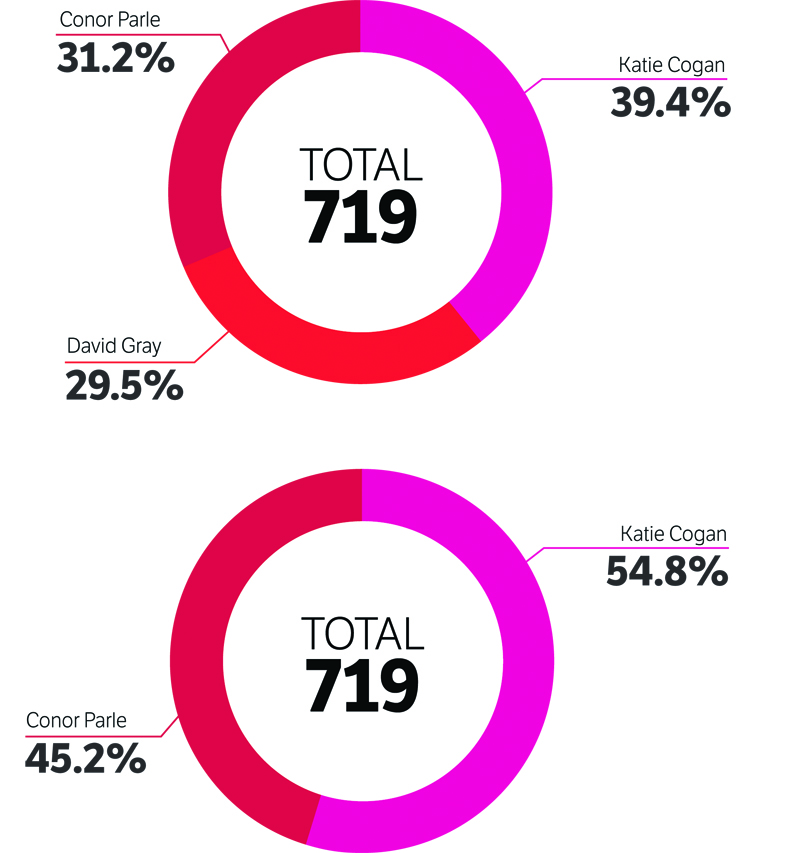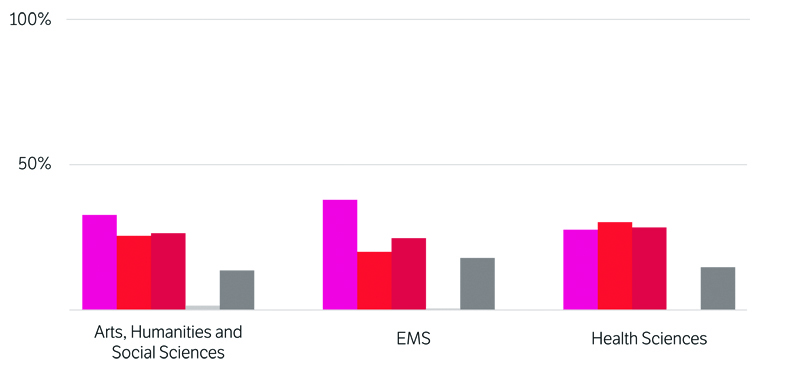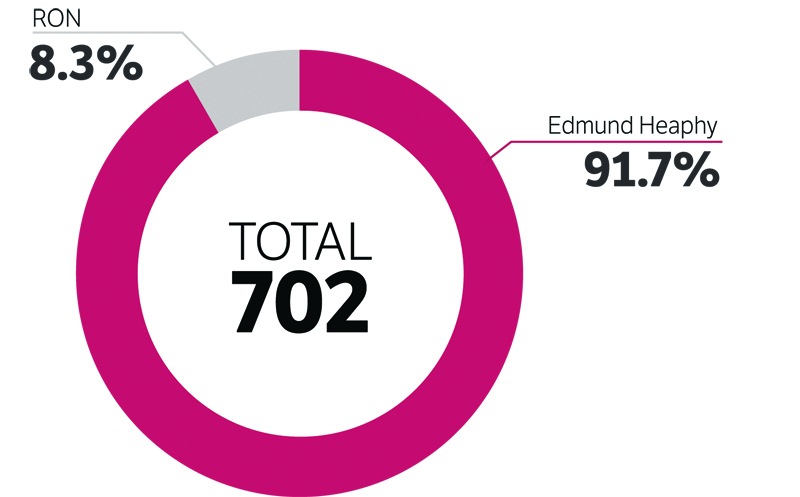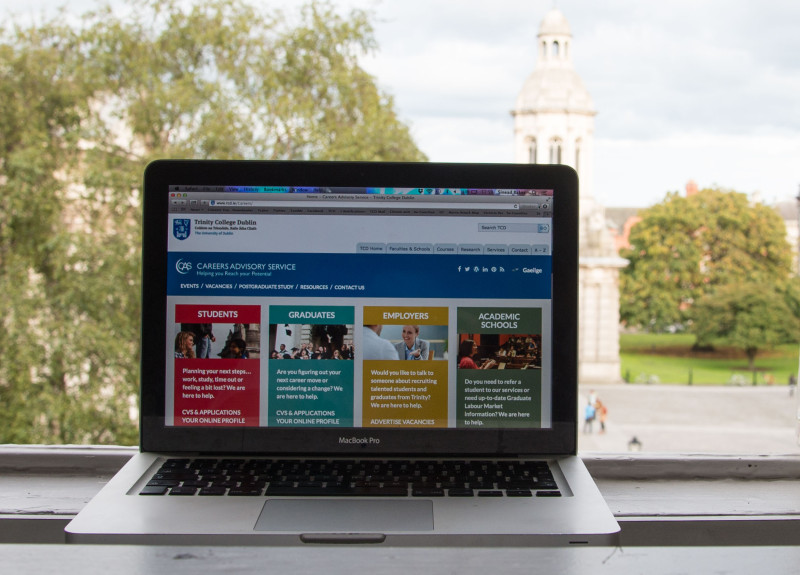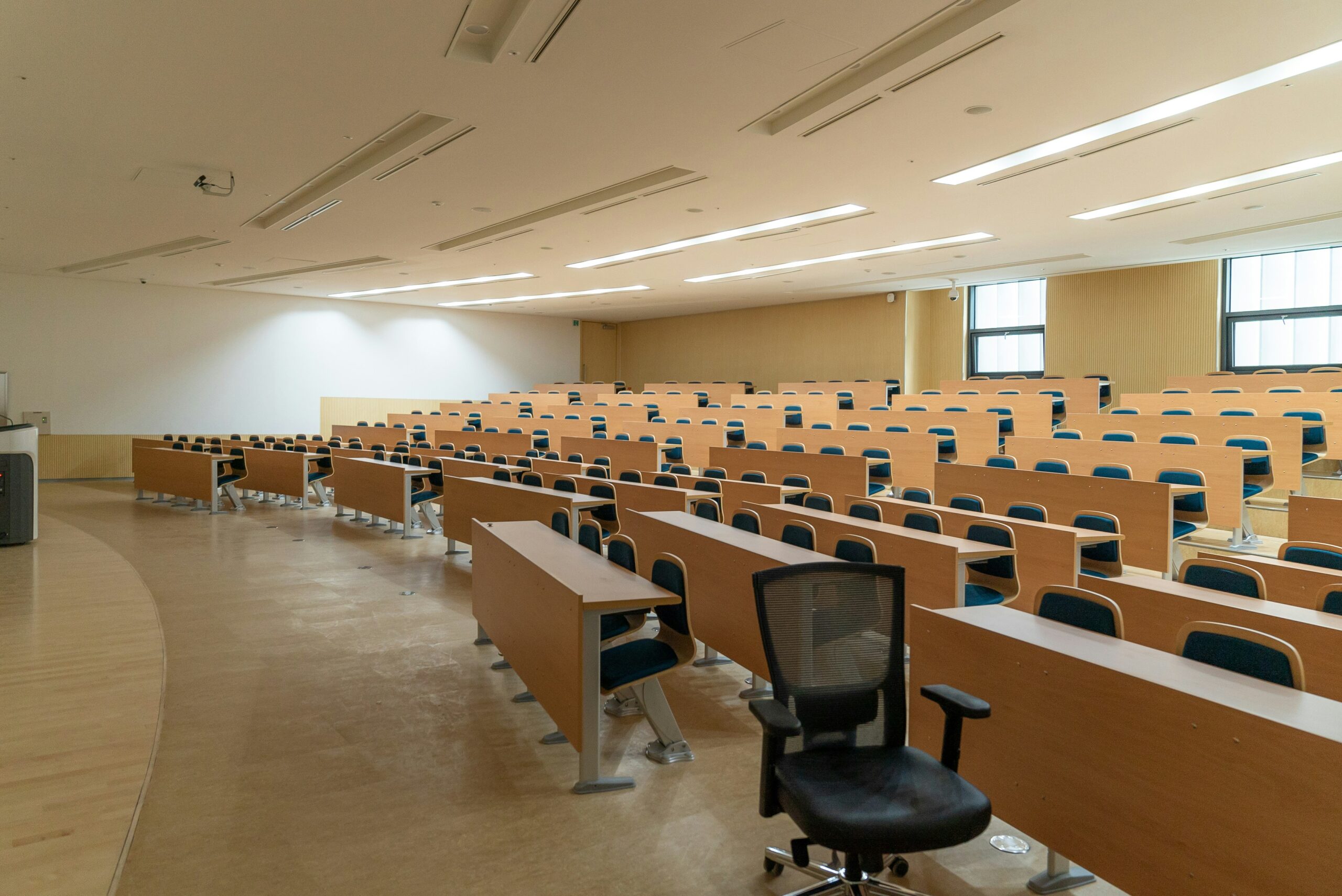Samuel Riggs, Jack Leahy, Sinéad Baker & John Keating
The University Times election poll was conducted over a three-day period, from Wednesday February 4th until Friday February 6th. The poll was conducted in both on-campus and off-campus locations, in the Arts Block, Hamilton, SU Café, D’Olier St., St. James’ Hospital, the Buttery, the GMB and the Biomedical Sciences Institute. We polled 857 students about who they’re voting for in the upcoming elections, their satisfaction with the policies being presented, and the influence of online campaigning versus in-person campaigning.
On first preferences, the poll predicts that Lynn Ruane, Conor Clancy, Aifric Ní Chríodáin and Katie Cogan will win their races, whilst Edmund Heaphy and Molly Kenny establish comfortable leads over RON as uncontested candidates. However, many races come with a high number of undecideds, and when second and third preferences are taken into account, the gaps between the top-tier candidates narrow significantly.
Totals displayed indicate the number of votes tallied after undecided voters were removed from the race. There is the possibility of a 3% margin of error within our results.
President
The Presidential Race looks set for a shake-up this year, as Lynn Ruane is predicted to take the presidential top spot. On first preferences Ruane receives 42.7 per cent of the vote, with Conor O’Meara trailing just behind with 34.5 per cent. Human Health & Disease student Gabriel Adewusi takes home 11.9 per cent of the first preferences. Nessan Harpur is polling last, with 10.9 per cent for the Engineering student. RON is anticipated to account for 0.9 per cent of the total vote.
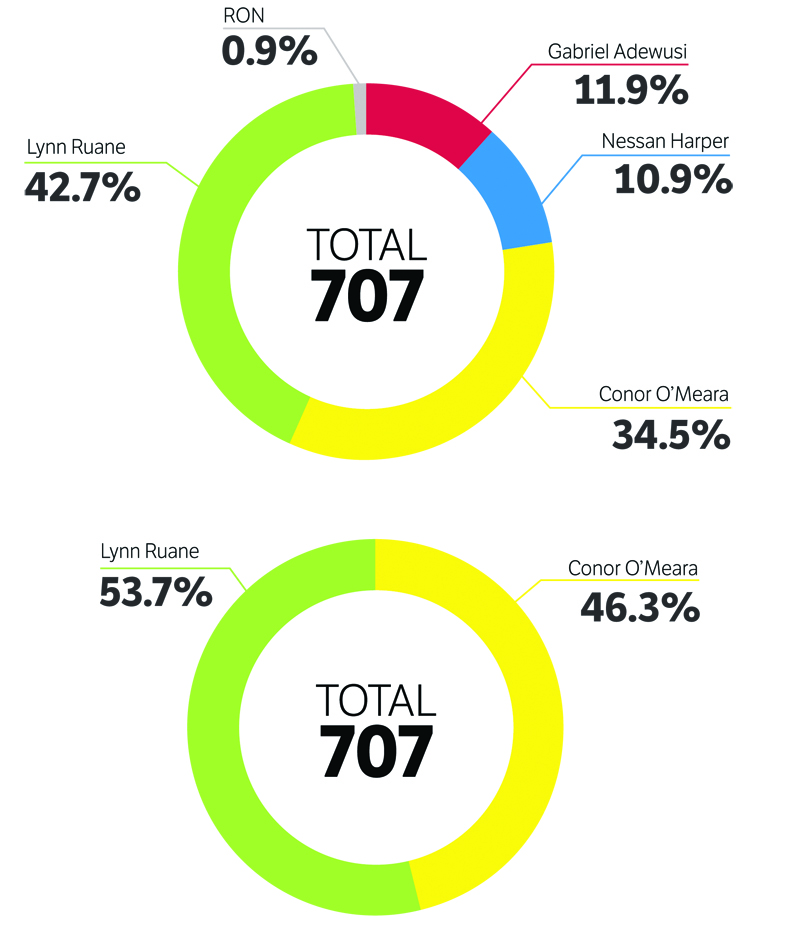
Ruane polls highest amongst her fellow third years, receiving 42.8 per cent of the Junior Sophister vote. O’Meara establishes dominance amongst first years, with 38.1 per cent of Junior Freshman students voting for him. O’Meara polls below Ruane in second year, despite having served as JCR Halls President during that cohort’s first year. He polls at 29.8 per cent to Ruane’s 33.9 per cent.
In Senior Sophister Harpur mounts an interesting comeback, taking home 20 per cent of the vote, unsurprising considering he is the only Senior Sophister competing in the Presidential race. In this year, he out-polls O’Meara, who rests at 15.4 per cent, although he still receives only half of Ruane’s votes, who sits pretty at the top of the Senior Sophister polling constituency with 40.7 per cent, nearly double of Harpur’s prospective voters.
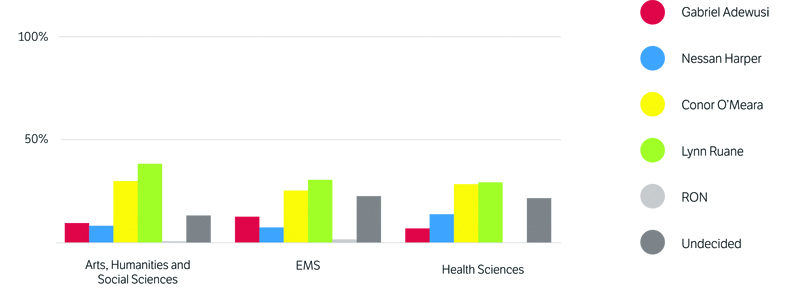
However, Harpur does not poll well in his own faculty, with only 7.4 per cent of the vote in EMS, the lowest of all candidates. The same is true of Adewusi, who polls at 6.9 per cent in his home faculty of Health Sciences. PPES students Ruane is a firm favourite amongst the Arts Block voters, and is expected to pull in 38.3 per cent of the final tally in this faculty. She furthers her lead in the Hamilton, with 30.5 per cent of the final vote. However, the two are neck and neck in Health Sciences, with Ruane anticipating 29.3 per cent of the vote in this area, and O’Meara catching up firmly at 28.4 per cent.
When second and third preferences are taken into account, eliminating Harpur and Adewusi from the race, Ruane and O’Meara share the distribution of second and third preferences, with Ruane just furthering her lead on the Galway native. The final breakdown puts Ruane at 53.7 per cent of the vote, whilst O’Meara receives 46.3 per cent of the final tally.
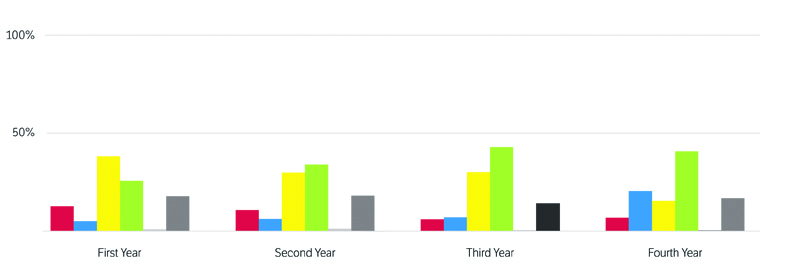
It is interesting to note than upon examination of the poll it was found that, of the people who placed O’Meara as their first preference, 44 placed Ruane as their last preference. The same is true if they are reversed – 44 of those who placed Ruane as their first preference, also placed O’Meara as their last preference, pointing to something of a factional divide among contrasting approaches and characters.
There are no definitive answers or clear-cut winners in the Presidential race but, taking into account the gathering momentum of Ruane’s campaign, The University Times predicts that Ruane will take the presidency for 2015/2016.
Education
Uncontested Education candidate Molly Kenny will receive 88.8 per cent of the final vote in her bid to become Education officer, and looks set to assume office with few feathers ruffled. RON will receive 11.2 per cent of the vote.
Kenny receives her most definite ‘yes’ vote in her home faculty of EMS, with 76.8 per cent of people voting for her here. She also looks safe in the Arts Block, where she receives 71.7 per cent of the vote. At time of writing, Kenny has not yet paid a visit to St. James’ or Tallaght Hospitals, and this reflects in her results amongst the Health Science faculty – while Kenny still receives 53.4 per cent of the votes in Health Sciences, she has the highest number of undecideds in this quarter, with 36.2 per cent of those polled unsure of whether or not they’re voting for Kenny.

Kenny receives a high approval rating across all year groups, but gets her highest definite vote amongst fourth years, of whom 75.3 per cent are going to give Molly their vote. However, this is where Molly receives her highest RON percentage as well, at 11.1 per cent. In the year-by-year breakdown, votes for Kenny and RON both rise, whilst the number of undecideds decrease.
Welfare & Equality
The Welfare & Equality race quickly established itself as the one to watch this year, with the highest number of candidates competing for the position in living history. The breakdown of the polls suggests that Conor Clancy is set to beat off the competition and take the Welfare Race. In this race, the RON vote accounted for less than 0.01 per cent out of all those polled, and thus was discounted from the final tally.
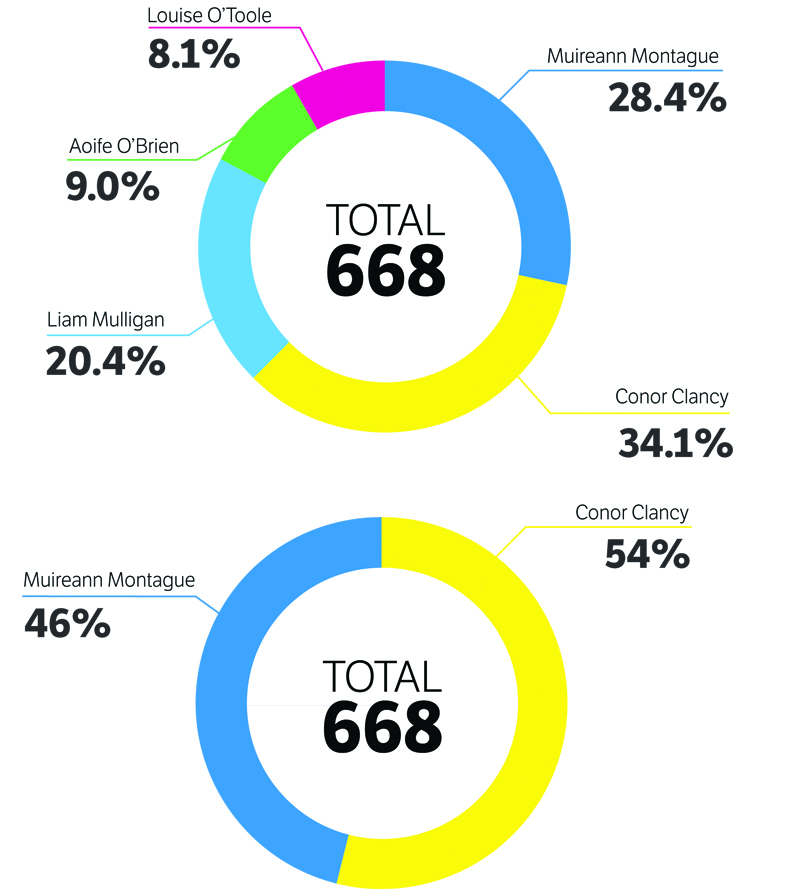
Discounting undecideds from the race, the final tally for first preferences puts Clancy in the lead with 34.1 per cent. Hot on his heels comes Muireann Montague, bringing in 28.4 per cent of voters – Mulligan (20.4 per cent), O’Brien (9 per cent) and O’Toole (8.1 per cent) make up the rest of the voting table.
In the year-by-year breakdown, Clancy establishes his biggest lead amongst first years, with 32.6 per cent of the declared preference. He leads Muireann Montague (26.5) by just 6.1 per cent, whereas Liam Mulligan (7.4 per cent), Louise O’Toole (5.6 per cent) Aoife O’Brien (2.8 per cent) struggle to impress the newest members of the student population. A significant portion of campaign planning is dedicated to mobilising the first year vote, so O’Brien and O’Toole in particular have much cause for concern. 65 per cent of O’Brien’s first preference votes are from the Arts Block voters, which indicates a lack of campaign power elsewhere on campus.

Mulligan polls poorly amongst first years and fourth years, at 7.4 per cent and 7.6 per cent of the total vote respectively, but leads the poll amongst third years, beating both Montague and Clancy with 27.9 per cent of the final percentage, re-establishing the trend of being well-voted on in your year group.

It is interesting to note that, amongst the Welfare & Equality candidates, the re-distribution of preferences once O’Toole, O’Brien and Mulligan are eliminated follow gender lines – the majority of second preferences from O’Toole and O’Brien go to Montague, whilst Mulligan’s second preferences are reserved almost exclusively for Clancy.
In the hotly contested races, it is of note that the RON vote is particularly low, while undecided voters abound. This establishes a trend across voting lines – voters are unwilling to cast their vote in any direction, indicating that few candidates have done enough work to sway a large percentage of voters to their cause.
At the final breakdown of votes, it’s anticipated that Clancy will receive 54 per cent of the vote, establishing an 8 per cent lead over Montague, who polls at 46 per cent once all other candidates are eliminated and their preferences redistributed. This mirrors last year’s polls, where Ian Mooney pulled ahead of Dan McFadden by just 9 per cent. The race is not won or lost by any means, with potential for Montague to retake the race, particularly when you consider that Welfare & Equality is the race with the highest number of undecided voters, totalling at 21.4 per cent of those originally polled. With the final days of campaigning looming fast, it seems that everything is to play for in the Welfare & Equality race.This high rate of undecideds is notable for being the highest number across all races. Welfare has remained the most contested race for the last two years, with last years’ figures also showing high levels of undecideds – ranging from 35 to 75 per cent across all years and faculties. This is most likely attributable to the large number of candidates, yet also may be a reflection of the Welfare and Equality race where policies tend to be quite similar, focusing on mental and sexual health, LGBT issues and substance abuse.
Communications & Marketing
Aifric Ni Chríodáin leads Jemma O’Leary by a comfortable 20 per cent in the polls, and looks set to be the union’s first Communications & Marketing Officer. The University Times poll anticipates that Ni Chríodáin will receive 60 per cent of the vote, while O’Leary will poll at 40 per cent. RON votes accounted for less than 10 per cent of those polled, and thus were discounted from the final tally. 18.1 per cent of prospective voters remain undecided.
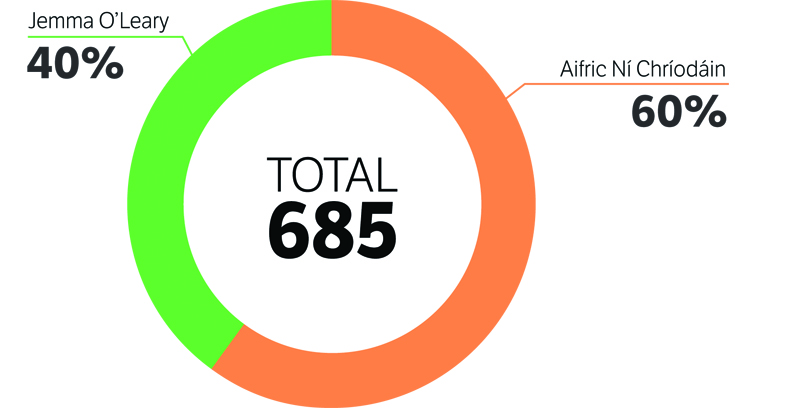
Ni Chríodáin holds varying leads in two of the three faculties: 46.8 per cent to 36.3 per cent in Arts Humanities, and Social Sciences (14.5 per cent undecided), 61.1 per cent to 18.4 per cent in Engineering, Maths, and Science (20.5 per cent undecided). O’Leary pulls level in Health Sciences, with both candidates commanding 34.5 per cent of the decided vote (31 per cent undecided).
O’Leary is set to command the majority of votes in her own third year, with 41.9 per cent of preferences to Ni Chríodáin’s 40.5 per cent. Ni Chríodáin leads in years first (47 to 31.2), second (59.2 to 30.2) and fourth (55.6 to 25.1).
According to this data, Ni Chríodáin is set to be elected to the position, but not without having been run close. As the debate between the candidates as to the priorities of the roll reduces in intensity, both will now focus on solidifying their bases and swinging the considerable number of undecideds.
Ents
As the poll stands, Katie Cogan is currently leading the pack, looking set to be the first female Ents officer in over ten years. At 33.1 per cent of first preferences, she leads Conor Parle, who stands at 26.2 per cent, and David Gray at 24.8 per cent. Despite this early lead, Cogan and her #PinkHatMovement will have to work hard in order to hoover up the noteworthy number of undecideds, who stand at 14.6 per cent of the total number of those originally polled. Once again, RON accounted for a number too small for calculative purposes.
Cogan establishes her lead by securing the first preferences of both second and third years, at 35.5 per cent and 38.1 per cent respectively. Grey is incredibly popular amongst first years, snatching up an impressive 40.9 per cent of the vote, whilst Parle’s policies are the most appealing to fourth years, who give him 37.4 per cent of their overall voting power.
Cogan, however, retains cross-faculty appeal, as the most popular candidate in both Arts, Humanities and Social Sciences, and in the Engineering, Math and Science faculty. That said, she trails behind both Gray (30.2) and Parle (28.7) in Health Sciences, although the three candidates are only separated by 2.6 per cent.
Projections for the second count involve eliminating Gray, who has the lowest number of first preferences. Redistributing his votes according to second preferences, and not accounting for undecideds, Cogan comes out on top with 54.8 per cent of the final vote, pipping Parle to the post, who is expected to accrue 45.2 per cent.
The early drop-off of Ents candidate David Gray displays a changing of tastes when it comes to Ents – outside of first year, the approval ratings for candidates like Cogan and Parle, who are promising non-traditional Ents events, improves dramatically, whilst Gray polls strongest amongst first years to whom, it can be assumed, his revamp of the weekly Ents night appeals greatly.
Of note is the fact that, should Gray recover some votes over the next couple of days and overtake Parle, Cogan still receives the lion’s share of the votes once second preferences are distributed, and is expected to continue on to victory. Katie Cogan, 33.1 per cent, leads Conor Parle at 26.2 per cent and David Gray at 24.8 percent in first preferences, but will have to continue to work hard to hoover up a notable number of the undecideds, which stand at 14.6 per cent of the total number of those polled. Once more, RON accounted for a small number. Cogan is the most popular candidate among second (35.5 per cent) and third year (38.1 per cent) voters, whereas Grey is most popular among first years (40.9 per cent) and Parle the most impressive to fourth years (37.4). Cogan enjoys the most cross-faculty appeal; she is the most popular candidate in both Arts, Humanities and Social Sciences and Engineering, Maths, and Sciences. Although she is behind both Gray (30.2) and Parle (28.7) in Health Sciences, the three candidates are separated by only 2.6 per cent.
Projections for the second count involve eliminating Gray, who has the lowest number of first preferences, and redistributing his votes according to the highest next preference, and not accounting for undecideds. In this scenario, Cogan finishes with 39.4 per cent of the overall vote, with Parle finishing with 31.2 per cent.
Editor of The University Times
Edmund Heaphy is staving off the threat of re-opened nominations, with 91.7 per cent of students expected to vote for him in the upcoming elections, when undecideds are discounted from the race. 8.3 per cent of students are expected to re-open nominations.
Heaphy’s election is most threatened by his fellow second years, of whom 8.7 per cent intend to vote RON. 5.1 per cent of first years, 7 per cent of third years and 6.4 per cent of fourth year students will access the same option.
Heaphy is least popular in the Health Sciences Faculty, where 69 per cent of students polled intend to vote for him (26.7 per cent undecided). He commands the support of 74.2 of those in Engineering, Maths & Sciences (21.1 per cent undecided) and 77.4 per cent of students in Arts, Humanities, & Social Sciences (14.9 per cent undecided). When undecideds are removed, approval ratings for Heaphy increase further.
Heaphy has had a strong visible presence in most campus locations over the week, and this is reflected in the fact that he has received fewer RON votes than Kenny, the other uncontested contestant, who has tended to take a more relaxed approach to campaigning. His policies seem to be being received well by students, despite the Editor position being perhaps more niche in terms of appeal than the sabbatical positions that are up for grabs.
Pollsters: Sinéad Loftus, Sarah Ledden, Shane de Rís, James Cotter, Sarah Ledden and Tom Myatt.


